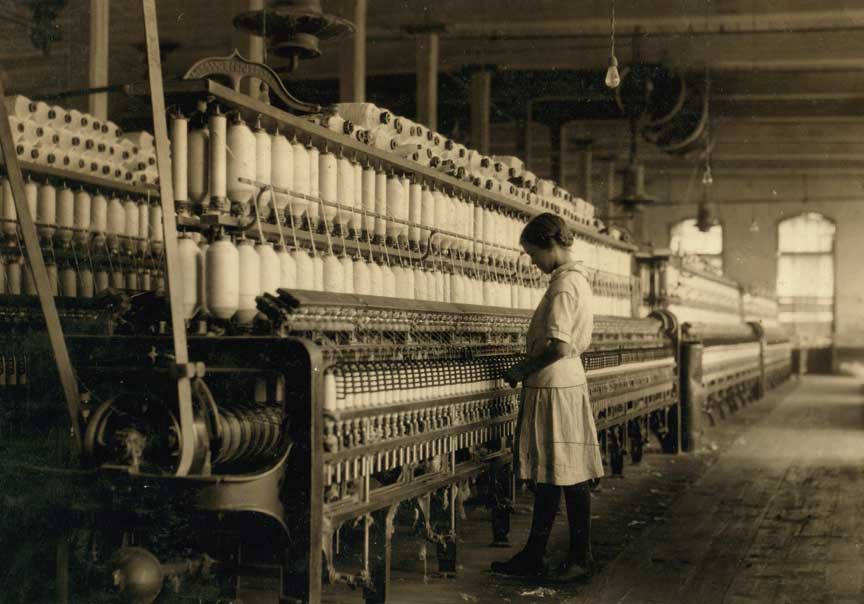Child Labor Law Passed

The Child Labor Law, otherwise known as the Keating-Owen Act of 1916, prohibited the shipment by interstate commerce of products made by children. This was the first child labor law. The law was invalidated by the Supreme Court two years later.
Child Labor and the USChildren and work had a long history in the United States as it did in the rest of the world. On the farm, children were expected to work as soon as they were old enough and strong enough. Boys would work the fields and girls help with chores. Work was considered something positive. As more of the country moved from the farm to the cities, and more of the work moved to factories, more and more children worked in factories. In 1820 more than 40% of the mill workers in New England were children under 16. According to the census of 1870 1 out of every eight children worked. That number rose to 1 out of 5 by 1900. Children were an essential part of the workforce. They worked in garment factories of New York, in the Cotton Mills of the South and on the streets of the large cities selling newspapers and shining shoes and on the farm. In the September 1906 edition of Cosmopolitan, there was a story of a Native American chief who is taken on a tour of New York- a city with skyscrapers the Brooklyn Bridge and millions of residents. The chief was asked, “What is the most surprising thing you have seen?” The chieftain replied slowly with three words: “little children working.” Opposition to children working grew slowly. In England, labor reforms began early in the 19th century to work against child labor. Factory owners claimed that if children were barred from working it would bankrupt them. On the state level, some laws were passed to protect children. One of the first was passed in Connecticut in 1813, that law required that those children who worked in factories had to be taught reading, writing, and arithmetic. In 1842 the Massachusetts legislature passed a law limiting the work hours of children under 12 to 10 hours. Connecticut applied the law to children under 14. In 1872 the Prohibition Party became the first party to call for the end of child labor in factories. In 1874 a fire at the Granite Mill in Fall River MA killed 20 people most of them young children. The fire received nationwide coverage, and while most of the coverage dealt with the need for better fire safety, the fact that so many children were killed began to penetrate into the public consciousness. Between 1885 and 1889 10 states passed a minimum age law for children while 6 set the maximum number of hours that a child could work. During this time compulsory education laws were passed in the North, and as a result, the number of children in high school increased 150% between 1890 and 1900. More and more stories spread about the horrors of child labor. Companies fired back claiming it was good for the children and besides they would become bankrupt if stopped child labor. In 1905 an attempt was made to pass a bill limited child labor in North Carolina, the bill was initially expected to pass, but last-minute lobbying by mills resulted in its defeat. In 1906 the first national bill to limit child labor was introduced into Congress. The very introduction heightened awareness of the topic in the public minds. In March 1912 14-year-old Camella Teorli mesmerized the country when she gave testimony on to Congress. Sitting in the committee room was Helen Taft the First Lady. Camella told how when the labor laws had been passed to limit the number of hours that women and children the owners had sped up their machines. A year earlier a man had come up to her father and convinced him to let her work. Her father was not sure how old she was ( a common practice) so the man promised papers for money. Carmella’s hair became caught in the faster machines, and he lost part of her scalp. She was hospitalized for seven months, and the company refused to pay since her Father had lied about her age. This victory for those fighting child labor was short lived. The Supreme Court ruled the law unconstitutional in 1917 in the decision of Hammer Dagenhart.
|
 >
>